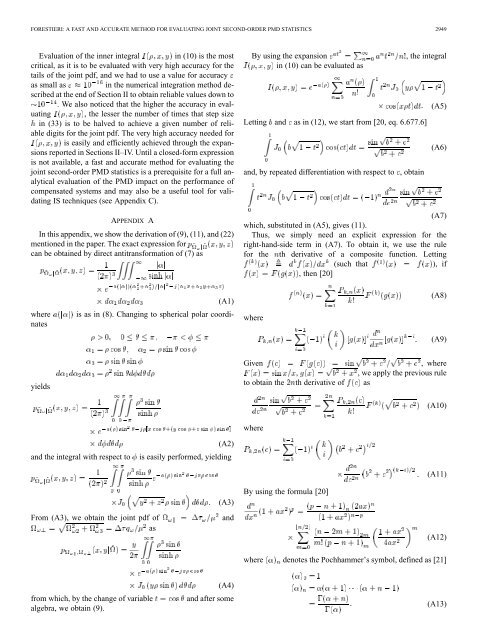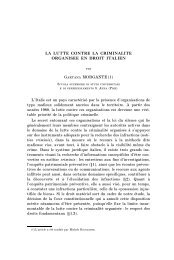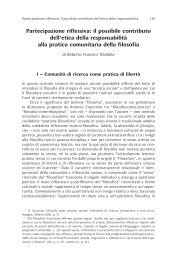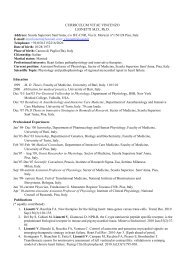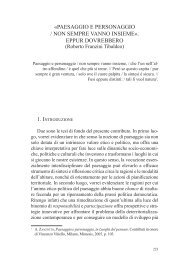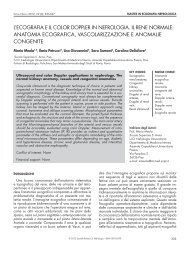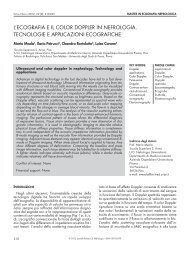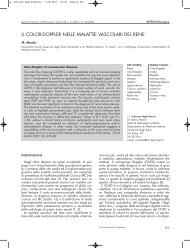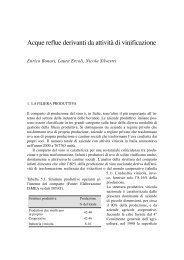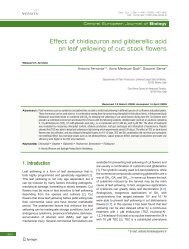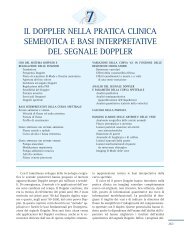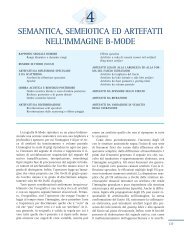A fast and accurate method for evaluating joint second-order PMD ...
A fast and accurate method for evaluating joint second-order PMD ...
A fast and accurate method for evaluating joint second-order PMD ...
You also want an ePaper? Increase the reach of your titles
YUMPU automatically turns print PDFs into web optimized ePapers that Google loves.
FORESTIERI: A FAST AND ACCURATE METHOD FOR EVALUATING JOINT SECOND-ORDER <strong>PMD</strong> STATISTICS 2949<br />
Evaluation of the inner integral in (10) is the most<br />
critical, as it is to be evaluated with very high accuracy <strong>for</strong> the<br />
tails of the <strong>joint</strong> pdf, <strong>and</strong> we had to use a value <strong>for</strong> accuracy<br />
as small as in the numerical integration <strong>method</strong> described<br />
at the end of Section II to obtain reliable values down to<br />
. We also noticed that the higher the accuracy in <strong>evaluating</strong><br />
, the lesser the number of times that step size<br />
in (33) is to be halved to achieve a given number of reliable<br />
digits <strong>for</strong> the <strong>joint</strong> pdf. The very high accuracy needed <strong>for</strong><br />
is easily <strong>and</strong> efficiently achieved through the expansions<br />
reported in Sections II–IV. Until a closed-<strong>for</strong>m expression<br />
is not available, a <strong>fast</strong> <strong>and</strong> <strong>accurate</strong> <strong>method</strong> <strong>for</strong> <strong>evaluating</strong> the<br />
<strong>joint</strong> <strong>second</strong>-<strong>order</strong> <strong>PMD</strong> statistics is a prerequisite <strong>for</strong> a full analytical<br />
evaluation of the <strong>PMD</strong> impact on the per<strong>for</strong>mance of<br />
compensated systems <strong>and</strong> may also be a useful tool <strong>for</strong> validating<br />
IS techniques (see Appendix C).<br />
APPENDIX A<br />
In this appendix, we show the derivation of (9), (11), <strong>and</strong> (22)<br />
mentioned in the paper. The exact expression <strong>for</strong><br />
can be obtained by direct antitrans<strong>for</strong>mation of (7) as<br />
(A1)<br />
where is as in (8). Changing to spherical polar coordinates<br />
yields<br />
(A2)<br />
<strong>and</strong> the integral with respect to is easily per<strong>for</strong>med, yielding<br />
(A3)<br />
From (A3), we obtain the <strong>joint</strong> pdf of <strong>and</strong><br />
as<br />
(A4)<br />
from which, by the change of variable <strong>and</strong> after some<br />
algebra, we obtain (9).<br />
By using the expansion , the integral<br />
in (10) can be evaluated as<br />
Letting <strong>and</strong> as in (12), we start from [20, eq. 6.677.6]<br />
<strong>and</strong>, by repeated differentiation with respect to , obtain<br />
(A5)<br />
(A6)<br />
(A7)<br />
which, substituted in (A5), gives (11).<br />
Thus, we simply need an explicit expression <strong>for</strong> the<br />
right-h<strong>and</strong>-side term in (A7). To obtain it, we use the rule<br />
<strong>for</strong> the th derivative of a composite function. Letting<br />
(such that ), if<br />
, then [20]<br />
where<br />
(A8)<br />
(A9)<br />
Given , where<br />
, , we apply the previous rule<br />
to obtain the th derivative of as<br />
where<br />
By using the <strong>for</strong>mula [20]<br />
(A10)<br />
(A11)<br />
(A12)<br />
where denotes the Pochhammer’s symbol, defined as [21]<br />
(A13)


